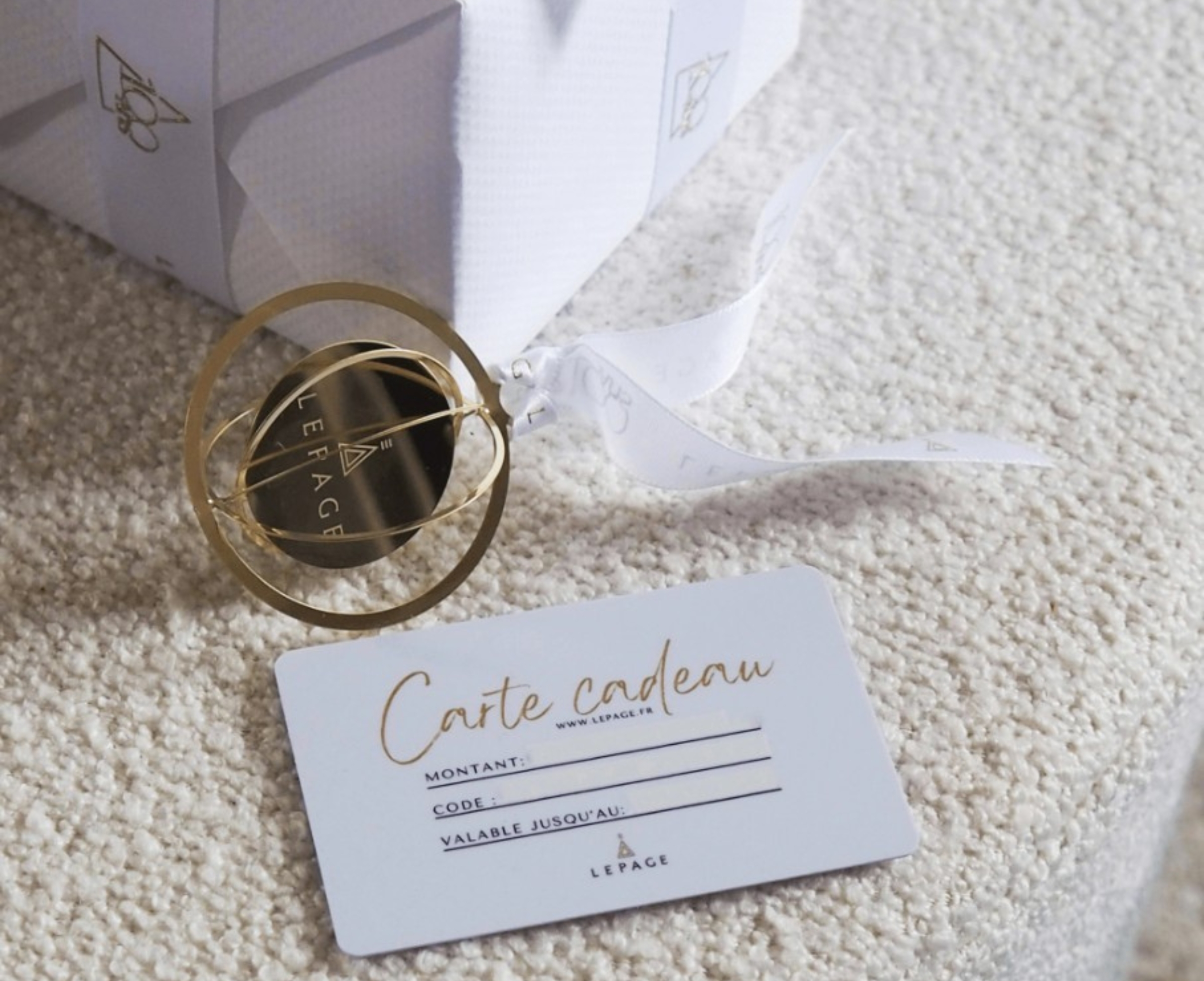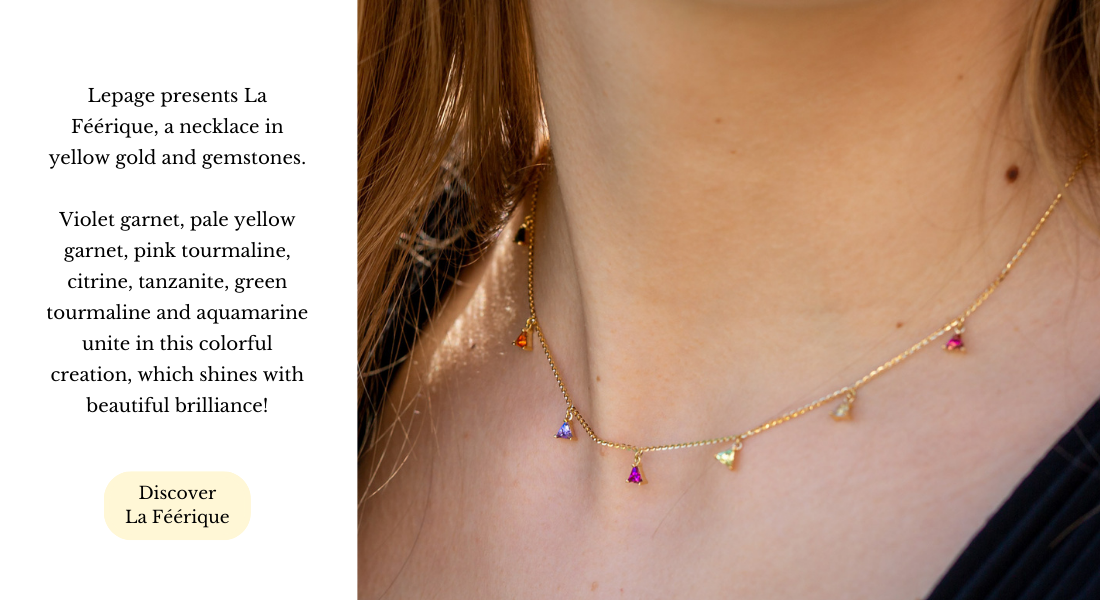Introduction
As November unfolds its autumnal colors, one stone shines particularly brightly, ready to illuminate all your outfits. In this article, we invite you to delve into the history of citrine, the emblematic stone of this month, according to the list of birthstones.
In the world of jewelry and luxury watches, every gem tells a story, and has its own unique characteristics. Citrine, with its warm hue and sunny glow, is no exception, and carries with it deep meanings linked to the legends and beliefs of days gone by. Whether you're a jewelry enthusiast or simply curious about the gems the Earth has to offer, this article on citrine is sure to please. !
Citrine, a stone rich in symbolism
Citrine through the ages
The etymology of the term " citrinecomes from the latin word "citrina", meaning "yellow". The name is based on the stone's characteristic color, which ranges from pale yellow to golden brown. This subtle chromatic palette has always been a source of fascination and contemplation for mineral lovers.
However, beyond its visual appearance, citrine has been imbued with profound cultural and symbolic meanings. In ancient times, it was often associated with prosperity, wealth and generosity. Ancient beliefs regarded citrine as a stone that could attract fortune and promote success in business ventures. Examining citrine through the prism of history reveals a common thread of belief that transcends borders and eras. Indeed, from Egyptian civilizations to Asian cultures, citrine has crossed the centuries as a universal symbol of radiance, luminosity and opulence.
Citrine symbols and beliefs
Citrine is generally regarded as a stone of positive energy and vitality. It is said to emit a warm, radiant energy that can lighten the spirit and dispel feelings of negativity. This property makes it a popular stone for bringing joy and confidence. Because of its luminous color, this fine stone is sometimes called "the crystal of the sun". This association with the sun is often interpreted as a symbol of inner light and spiritual warmth.
Citrine is believed to stimulate the solar chakra* energy center, located in the stomach area, which is linked to self-confidence and vitality. Similarly, in lithotherapy*, citrine is known to stimulate creativity and promote mental clarity. It is believed to help overcome mental blocks and free up creative ideas. This property makes it a stone appreciated by artists and people seeking to strengthen their creative thinking.
Finally, citrine's yellow color is often associated with emotional warmth and conviviality. It symbolizes the warmth of home and friendship. In some traditions, citrine is considered a stone that fosters positive relationships and encourages generosity towards others.
Geological features and colors
Citrine is a translucent "fine" stone (formerly known as "semi-precious"). With its sunny hue and distinctive sparkle, it possesses geological characteristics that make it as fascinating as its beauty. Understanding the formation of this gemstone and the variations in its nuances can enhance appreciation of its rarity and charm.
Citrine formation
Like many (if not all) natural stones, whether classified as gemstones, semi-precious stones or ornamental stones, citrine is a gem born in very specific, extreme geological conditions.
Belonging to the quartz family, one of the most widespread mineral families on Earth, citrine forms under the specific geological conditions under which quartz grows. It usually occurs when amethyst quartz, a violet variety of quartz, is exposed to high temperatures caused by geological forces or natural heat sources. Heat acts like an alchemist, affecting the crystalline structure of amethyst quartz. The atoms and elements that make up the mineral react to this heat by adjusting their arrangement, triggering a spectacular chromatic change. Amethyst's characteristic violet hues gradually fade, giving way to a range of yellows, from the softest to the deepest, as well as golden hues evoking the essence of the sun.
This process of transformation, by which amethyst quartz evolves into the highly prized citrine, is a fascinating example of the natural forces at work in the depths of the Earth. It also demonstrates the subtle reactions that can occur under extreme conditions. Each citrine that emerges from this process carries with it the silent tale of the vagaries and wonders of the subterranean world, capturing part of the telluric energy that gives birth to these shimmering gems.
Color variations
Citrine's color range is wide and varied. It encompasses hues ranging from light yellow, reminiscent of the softness of a morning sunbeam, to deep golden browns that evoke the richness of amber. Color variation depends on factors such as the degree of heating undergone by the amethyst quartz, as well as the mineral impurities present in the crystalline structure.
Shades of citrine can evoke different feelings and moods. Pale tones are often associated with freshness and lightness, while darker shades evoke sensual warmth and depth. This variety of hues offers luxury jewelry and watch designers a rich backdrop for expressing their creativity and aesthetic sense. Whether offered on the occasion of a 13th wedding anniversary, or to the natives of the month of November, it allows us to adapt to the tastes of the person for whom it is intended, by choosing to offer a stone with a rather light or rather intense color.
Citrine in jewelry
Citrine occupies a special place in the luxury jewelry industry, and for good reason. Its appeal is woven from multiple qualities that set it apart from other gemstones. Firstly, its captivating range of colors, from luminous yellow to deep golden brown, offers designers a rich backdrop for their artistic expressions. This variety of hues makes it possible to play with light and shade, creating jewelry that sparkles under different angles and lighting conditions.
Moreover, citrine embodies values and symbolism that resonate with the spirit of haute joaillerie. Associated with prosperity and abundance, it is often chosen to adorn sumptuous pieces designed to celebrate life's milestones. Its positive energy and warm glow harmonize perfectly with the timeless elegance of luxury jewelry designs, creating pieces that not only delight the eye, but also carry deep meaning for those who wear them.
Which metal to combine citrine with ?
Citrine, with its warm hues reminiscent of the sun's golden rays, is a stone that goes particularly well with gold in its various hues, whether white, yellow or pink. Each of these gold colors lends a unique personality to the jewel, meeting a variety of aesthetic and emotional expectations.
Yellow gold
The combination of citrine and yellow gold creates a classic, timeless piece of jewelry. The golden hues of citrine blend harmoniously with the shimmering brilliance of yellow gold, giving rise to a color palette reminiscent of the sun's warm rays and radiant luminosity. This combination embodies a sense of warmth and elegance that spans the ages.
White gold
The union of citrine and white gold creates a striking, sophisticated contrast. The neutral, pure appearance of white gold provides a subtle backdrop, allowing citrine to take center stage and shine with particular intensity. This combination highlights the gem's natural beauty, while adding a touch of modernity to the ensemble.
Rose gold
By marrying citrine with rose gold, a hint of softness and romance creeps into the equation. Citrine, with its warm hues, combines delicately with rose gold to create a visual effect that is both feminine and delicate. The subtle harmony between the warm tones of citrine and the tender nuance of rose gold evokes an atmosphere of intimacy and refinement, creating a delicate balance.
Which stones to associate citrine with ?
Yellow, a bright, sunny color, offers an ideal canvas for creating captivating chromatic associations. Among the harmonies that work well, white (diamonds, quartz) adds a touch of purity and elegance, while gray (pyrites, labradorites), whether soft or dark, can balance yellow while adding a touch of sophistication. Combining yellow with blue (sapphire, aquamarine, topaz...) creates a dynamic contrast, while green (emerald, tsavorite, green sapphire), echoing nature, offers an invigorating freshness. Violet (amethyst, garnet), complementary to yellow on the color wheel, can be visually daring, while orange (orange sapphire, tourmaline), close to yellow, evokes an energetic mood. Delicate, feminine pink (pink quartz, opal, rhodonite) can soften yellow, while red (ruby, jasper, etc.), especially the darker shades, adds a shimmering edge to this radiant color. In short, color combinations with citrine yellow are as varied as the emotions they evoke, offering a wide range of possibilities for expressing different styles and visual messages!
Conclusion
Today, citrine is recognized as the November birthstone due in part to its rich color and warmth, reminiscent of autumnal hues and the golden colors of leaves at this time of year. Its connection with the month of November makes it a popular choice for personalized jewelry, birthday or anniversary gifts to celebrate those born during this time of year. Choosing a gift based on the birth month stone associated with a person is a gesture imbued with lovely symbolism, loaded with meaning and reflection. It shows that you've taken the time to select something that reflects their identity and personality. What's more, this idea brings an element of surprise and originality, standing out from more conventional gifts. By honoring the stone's significance and choosing a gift that can bring luck and well-being, you create an unforgettable gift experience, celebrating someone important to you with a piece of jewelry of lasting sentimental and aesthetic value.
* Chakras are subtle energy centers in the human body, according to certain spiritual and esoteric traditions. Each chakra is associated with specific aspects of physical, emotional and spiritual health, and it is often suggested that certain stones can help balance and harmonize these energy centers.
* Lithotherapy is an alternative approach that holds that certain stones and crystals possess energetic and healing properties that can influence physical, emotional and spiritual well-being. According to this belief, simply wearing, placing or meditating with these stones can balance bodily energies, improve mental health and even cure various ailments. However, it is essential to note that lithotherapy is not scientifically validated, being more a form of alternative medicine. In the event of pain or health problems, it is strongly recommended to consult a qualified medical professional for appropriate advice.

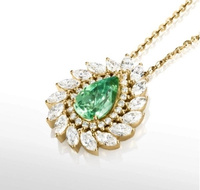
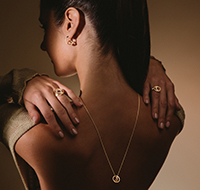


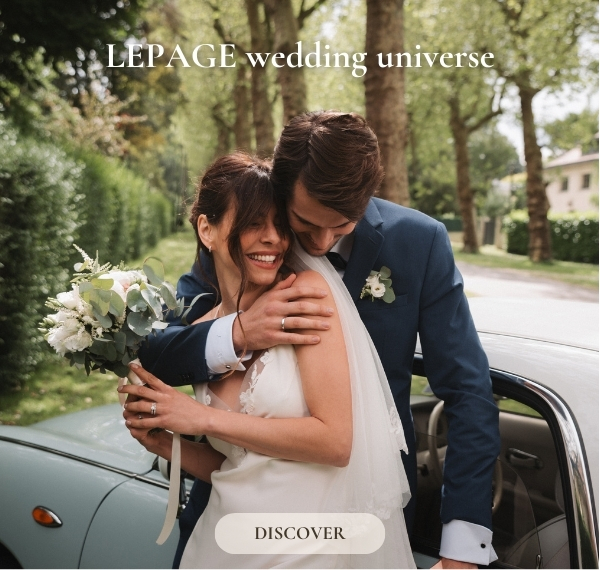
.jpg)
.png)

